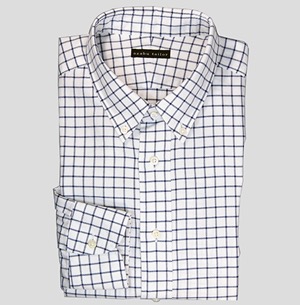1.Prologue: Dreaming of Dinosaurs
Up until now I’ve interviewed a number of directors and actors for the TV show, but when my producer came to me about interviewing the director and lead actors for Jurassic World: Fallen Kingdom, it felt like a childhood dream of mine was coming true.
All American boys—especially those growing up in the 90s—go through a dinosaur phase. The biggest reason is a little ol’ film directed by Steven Spielberg in 1993 called Jurassic Park. (The film was adapted from a novel by Michael Crichton, who also co-wrote the script for the film.) Along with the Indiana Jones films, Jurassic Park turned archeology into an adventure-packed profession, which I’m sure captivated kids everywhere.
And without a doubt, I was one of those kids. After watching Jurassic Park I became obsessed with dinosaurs and even dreamed of becoming an archeologist. My fascination was further fueled by the fact that the 90s were a great time for dinosaur-related scientific discoveries.
One discovery was especially intriguing: fossils unearthed in the late 20th century seemed to indicate that many dinosaurs had feather-like coverings. In other words, it wasn’t reptiles but birds that were dinosaurs’ closest living descendant.
The word dinosaur literally means “fearfully great lizards", and films like Jurassic Park depict dinosaurs as mostly scaly, dark gray lizard-like creatures. But the latest research findings were arguing otherwise. In fact, they seemed to indicate that the velociraptor—one of Jurassic Park’s main baddies—was likely a feathered dinosaur. And more and more archeologists were saying that the dinosaurs were a more colorful bunch than the gray palette pop culture had chosen for them.
What’s more, despite the title, I found out that most of the dinosaurs that appear in the film actually come from the Cretaceous period (from 145 million to 66 million years ago) rather than the Jurassic period (from 200 million to 145 million years ago). Just for a split second I saw the sins of Hollywood dramatizations and the limits of big-budget blockbusters.
In any case, in middle school, Hollywood films like Independence Day and Armageddon made me want to become an astronaut. Nevertheless, I have always made sure to catch new Jurassic Park films on opening weekend.
2.Thoughts on Jurassic World: Fallen Kingdom
Jurassic Park had two sequels with successively lower box office results. But then came along Jurassic World in 2015, which was a massive hit. Although perfectly adequate as a popcorn flick, for a fan of the series since the original, the film was a shell without the heart and soul of the original, entertaining but without any substance. (Although, if the film got any of its young audience interested in dinosaurs, I would say it did its job.)
This new film, however, surpassed my expectations. The first half is a pulse-pounding adventure, and the second half is an edge-of-your-seat horror flick. And most importantly, it has heart and soul, namely in the form of the bond between Chris Pratt’s character Owen and the velociraptor Blue.
The director J. A. Bayona is known for The Impossible (2012), which depicts the 2004 Indian Ocean tsunami, and the fantasy film A Monster Calls (2016). In other words, he often deals with “monsters" of one form or another while balancing that with family bonds and human drama. This film has that human touch as well. What’s more, it brings the topic of bioethics—which had largely been put on the back burner for the Jurassic Park sequels and Jurassic World—front and center.
Having watched all of these films, my number one gripe has always been the stupidity factor—the fact that these characters keep wanting to return to these islands of death. In the previous film Jurassic World, a new dinosaur theme park has opened on the site of the original disaster.
This latest film finally puts an end to that “let’s go back to the island" story beat (only after returning to the island one last time, of course). For the first time in a long while, I’m looking forward to the next one. For that miracle alone, for restoring a sense of wonder to the franchise, I would rank this film as my second favorite in the series after the original.
Of course, if they could stop trying to one-up themselves each time with an even bigger, badder carnivore, I would be even happier. The bad guys in these films are clearly the humans—is there really any need to try to shoehorn in a dinosaur antagonist?
3.Button-down shirt by Universal Language
I originally tried to wear this shirt for our #StarWarsDay episode, but was told that the shirt was creating a moiré effect. It’s been sitting on standby in my wardrobe ever since, and so I decided it was finally time for it to go out into the field for this interview.
Earlier in the year when I ordered a couple of suits at Universal Language in Shibuya, I took advantage of a special one free shirt deal and ordered mine in a luxury fabric from British maker Thomas Mason.
Thomas Mason fabrics are made using the finest Egyptian cotton. This shirt was made using 120 yarn count fabric—the finest fabric I’d ever chosen for one of my made-to-measure shirts—and has a silky smooth texture.
Yarn count indicates how many threads there are per square inch of a fabric. Higher numbers mean the threads are finer. Standard dress shirts are usually between 50 yarn count and 120 yarn count, but you can find 200s and 300s as well. Finer threads result in a lighter, softer fabric that feels silky smooth, but need to be taken care of. Thicker threads result in weightier fabrics, but don’t feel as great against the skin.
This is a striped shirt, but technically speaking there are many kinds of striped patterns. Pinstripes are very thin and give the impression of a line of pinhead spots, pencil stripes look like they were drawn by pencil, and chalk stripes look like they were drawn by chalk. This Thomas Mason fabric shirt has what is called a Bengal stripe pattern. The thicker stripes have a 1980s Wall Street banker vibe.
Stripes that are thicker than this are called awning stripes, and are not suited for a business environment. So be sure to choose your stripes with care.
4.Black necktie by Brooks Brothers

This is a slim tie from Brooks Brothers’ preppy casual line, Red Fleece. (¥9,720 tax incl.).
Slim ties were all the rage back in the 1950s and 60s, but in the 70s and 80s wider ties gradually came into fashion as part of a power suit/power dressing trend.
Since the turn of the millennium there’s been a resurgence in the popularity of slim ties, partly thanks to TV shows like Mad Men, which portrays the advertising world of 1960s New York—featuring a wardrobe full of slim ties.
When wearing a slim tie, remember to match it with a jacket that has lapels of roughly the same width, so that your look isn’t thrown off balance.
5.Necktie by Kamakura Shirts

I bought this necktie (¥5,400 tax incl.) last year at the Kamakura Shirts store in Shibuya Mark City. It’s a brown tie with small white polka dots.
Kamakura Shirts neckties are low-priced but high-performance, just like their shirts.
6.Gray suit by GlobalStyle

For more about this item, see FASHION & SHOPPING #008.
7.White and blue checkered button-down by Azabu Tailor

For more about this item, see CINEMA & THEATRE #005.
8.“M-27" glasses by 999.9

For more about this item, see CINEMA & THEATRE #005.
9.Gray socks by Brooks Brothers
For more about this item, see FASHION & SHOPPING #008.
10.Double monk shoes by Paraboot

For more about this item, see FASHION & SHOPPING #008.
11.Epilogue: Post-Interview Reflections
These days the actor Chris Pratt (or Kuri-Pura, as he’s affectionately called in Japan) has become the handsome leading man of such films as Marvel Studio’s Guardians of the Galaxy, but to me, he will always be the doughy good-natured dimwit Andy Dwyer from Parks and Recreation. In my interview he answered each of my questions thoughtfully and sincerely, and he seemed very genuine and down-to-earth. He’s the definition of a man’s man.
Bryce Dallas Howard is a wonderful actor known for her work in films like The Village (2004) and The Help (2011). She also happens to be the daughter of director Ron Howard, who I also got to interview for the show a couple of weeks ago. When I mentioned this fact to Ms. Howard, she recounted an experience she had as a kid, tagging along with her father on a trip to Japan. Apparently she got to join her father for a dinner with Kurosawa Akira and George Lucas...but ended up asleep on the floor from jetlag. Word is she is currently working on her feature-length directorial debut.
Speaking of Bryce Dallas Howard, the previous film Jurassic World was criticized for the wardrobe worn by Ms. Howard’s character, the park operations manager Claire Dearing. Claire is an enterprising, career-focused woman trying to get ahead, and wears heels in practically every scene she’s in—even after everything goes to hell and she finds herself being chased by a dinosaur. A lot of viewers decried the scene as ridiculous.
But if you ask me, in film, whether or not a character’s footwear is practical is missing the point. While wearing shoes to match the occasion is fashion 101, in a movie, it all comes down to what the shoes and a person’s style in general say about the character. Claire Dearing is hungry for authority, and she works not so much in “Jurassic World" as she does in the “business world". For her, high heels are a weapon (and for that matter, not a weapon to turn heads and impress guys, but a weapon to exercise her will and ambition). She’s an independent-minded character who is essentially saying, anything a guy can do, I can do—I’ll even do it in heels. She has no doubt in her mind.
The question of cinema’s relationship with what’s real is part and parcel of the movie-going and movie-watching experience.












